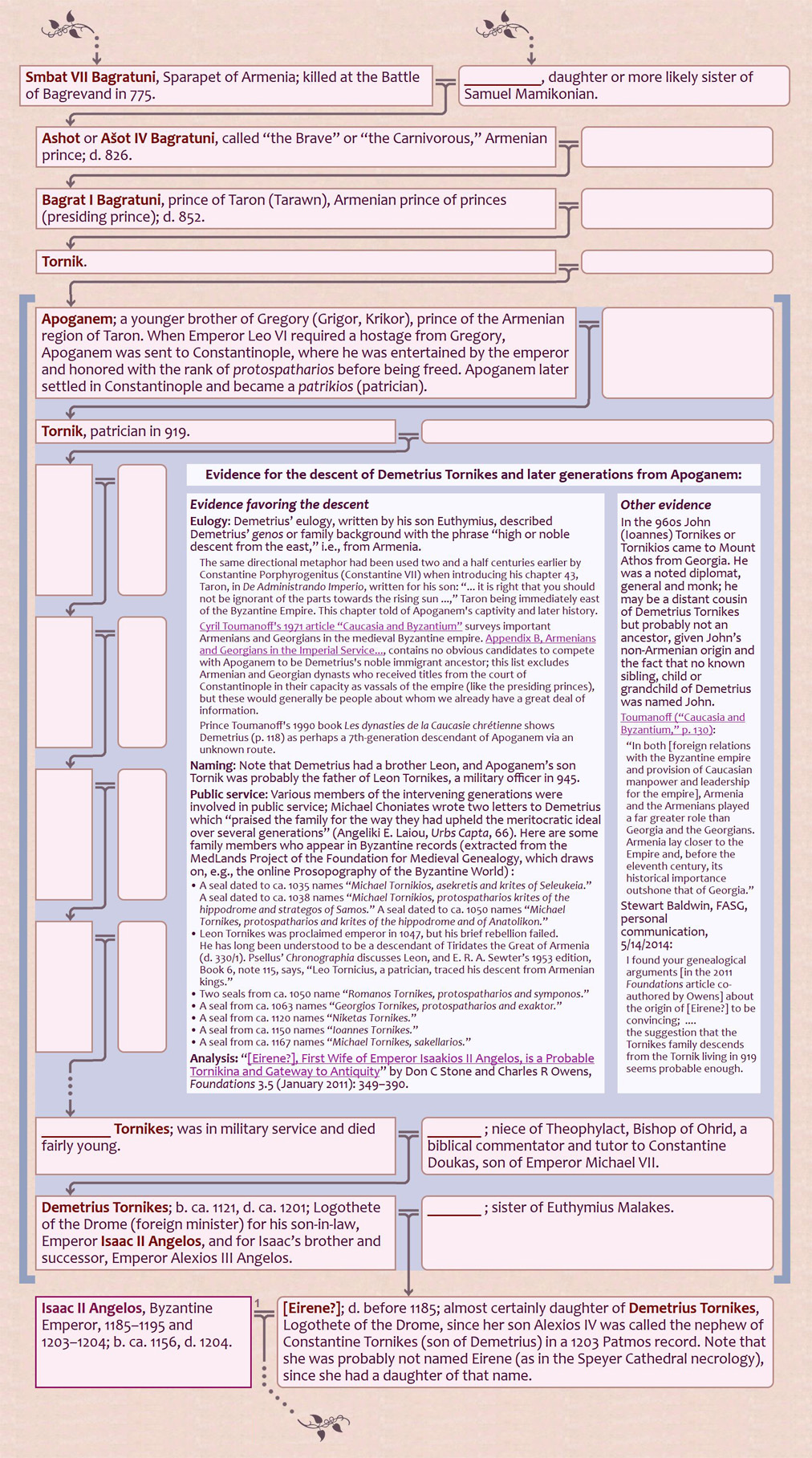|
Tornikes Ancestry
by Don Charles Stone |
|
Summary Our argument that the first wife of Emperor Isaac II Angelos was a daughter of Demetrius Tornikes was based on a December 1203 record from the Monastery of St. John the Theologian on Patmos (Patmos Acts 2.131.14). This record names Demetrius' son Constantine Tornikes as the theios (uncle) of the emperor (Alexius IV Angelos, son of Emperor Isaac II Angelos and his first wife). At this time, theios usually meant brother or (less often) brother-in-law of the father or mother, but sometimes, for example, the son of an uncle could be called theios of a child of the nephew (we would call them first cousins once removed, assuming it's a blood relationship). Our article itemized the different possible meanings of theios, noting the rarity of each and whether it was compatible with known information about the families of Constantine Tornikes and Emperor Alexius. We concluded that mother's brother was by far the most plausible interpretation of this use of theios, i.e., that Constantine Tornikes was very likely a brother of the first wife of Emperor Isaac II Angelos. See the cited article for a more detailed analysis of this Patmos record and related information. This is the only record known to mention a relationship between Alexius IV and the Tornikes family, but note that Alexius IV reigned for less than a half a year. |
|
Notation The notation used in the following chart is an adaptation of some established conventions for pedigree or lineage charts:
A chart may have a number of dashed lines indicating uncertainty and making the lineage appear fragile and in danger of fragmentation, but sometimes there is a contrasting cohesion dynamic. For example, we may know that someone is descended from a person (or couple) several generations earlier but not know the exact route of the descent. In such cases I use a notation in which the generations from the known ancestor(s) down to the descendant have a pale background which makes that block of generations a visual unit, and I further emphasize the certainty or near certainty of descent with light blue square brackets to the left and right of the block. For more information about notation, see http://AncientDescents.com/Notation. |
|
Credits Prepared by Don Charles Stone, http://AncientDescents.com. Copyright © 2018 by Don C. Stone. The articles cited in the comments below about evidence:
|
